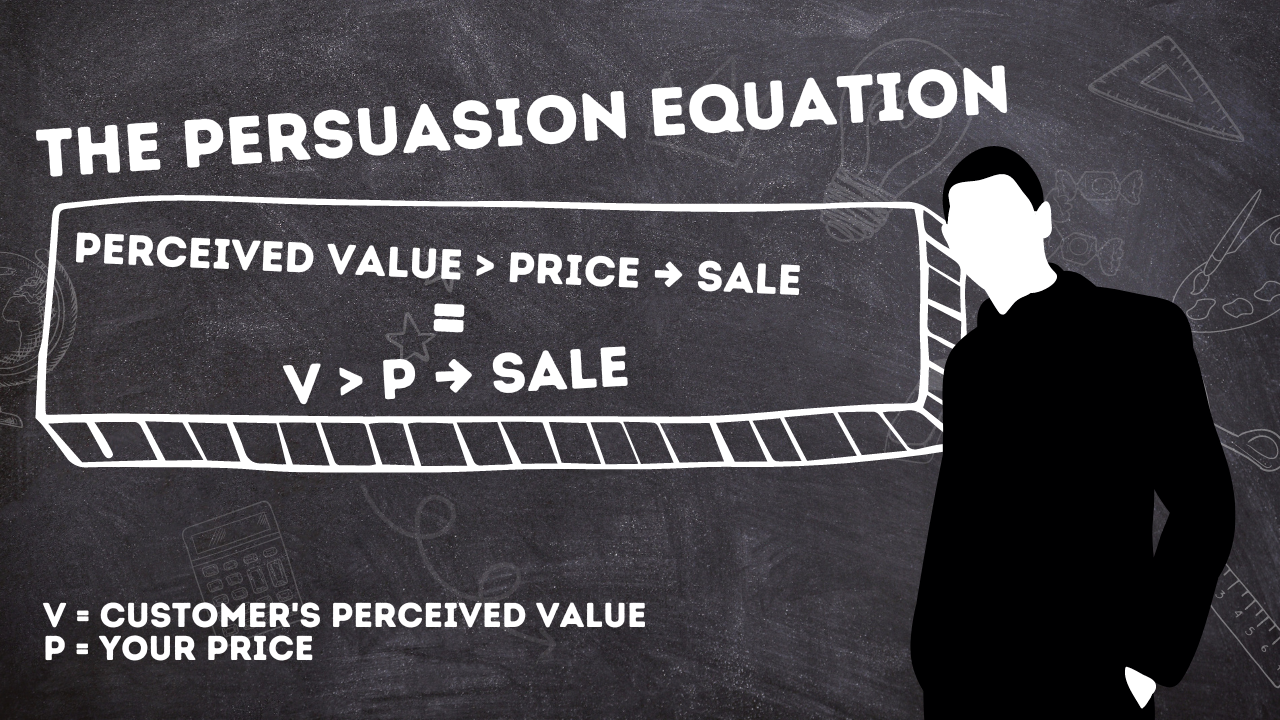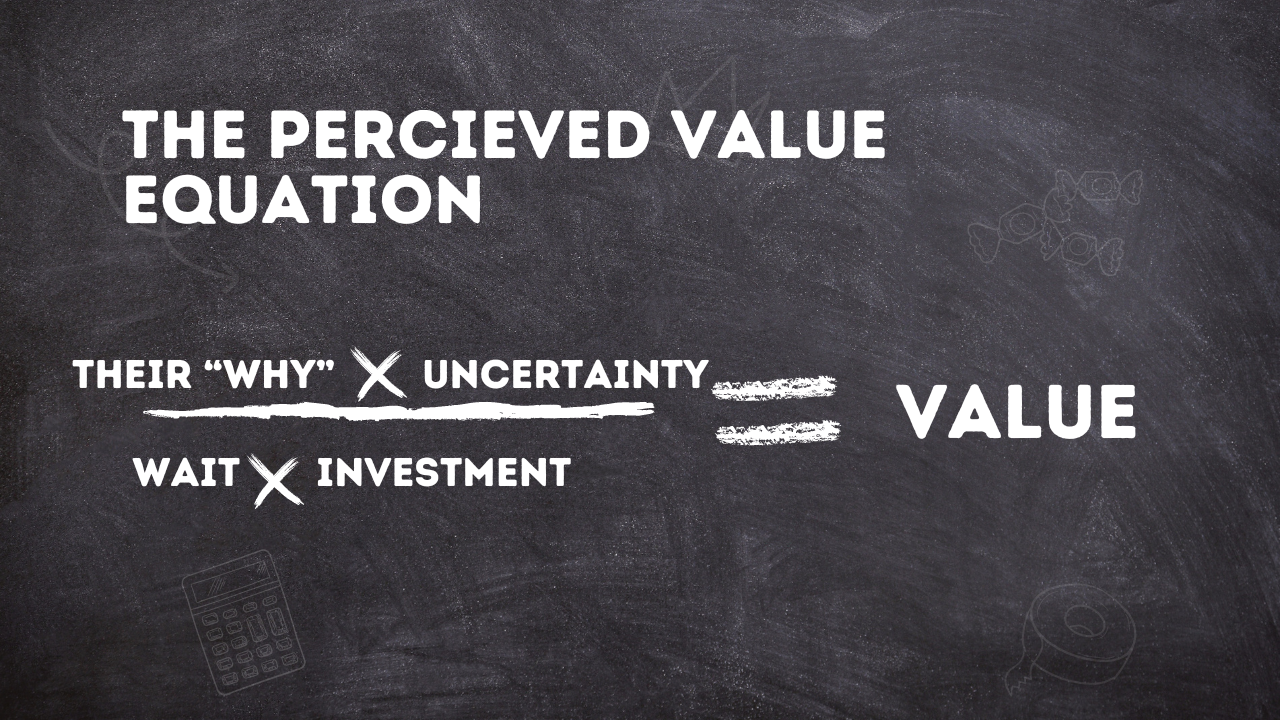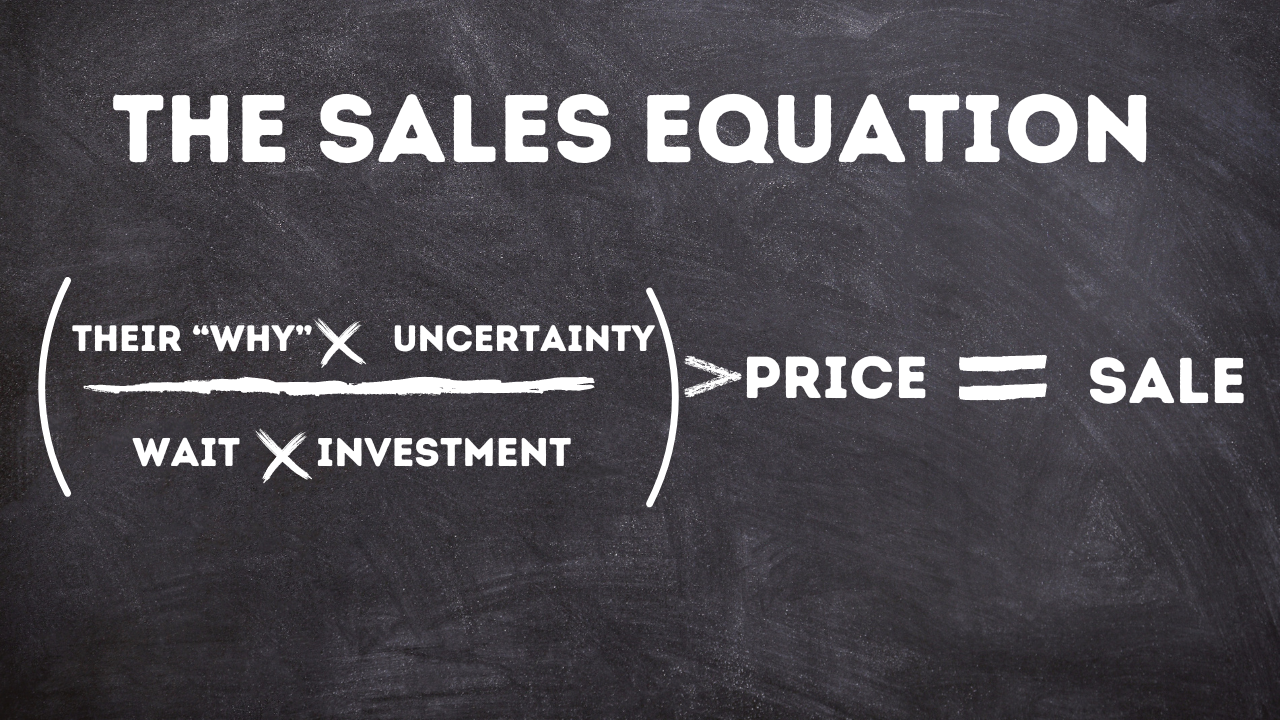Hustle Math
May 22
/
Noah Lantz
(This article was originally featured in the debut issue of "Gutter Buzz" in April of 2024).
Transform your gutter business from good to great with the power of "Hustle Math." This essential guide dives into the two fundamental sales equations – the Persuasion Equation and the Perceived Value Equation – revealing how to boost your sales and profit by enhancing the perceived value of your products.
Learn why customers buy, how to reduce uncertainties, and the importance of branding, quality, and convenience.
Transform your gutter business from good to great with the power of "Hustle Math." This essential guide dives into the two fundamental sales equations – the Persuasion Equation and the Perceived Value Equation – revealing how to boost your sales and profit by enhancing the perceived value of your products.
Learn why customers buy, how to reduce uncertainties, and the importance of branding, quality, and convenience.
Let's get real. Most gutter company owners didn't get into this business because they were jazzed about sales. They started out as installers and learned the ropes of the industry, not because they dreamed of becoming the next big sales guru, but because they had a knack for gutters. But here's the thing: if you want your gutter business to thrive, you can't ignore sales. You can't just slap some gutters up and call it a day. You need to sell those bad boys like your life depends on it. Moreover, you need to teach your sales guys how to sell.
That's where "Hustle Math" comes in. It's not a fancy MBA term. It's about understanding sales through two equations that are as basic as they are essential: the Persuasion Equation and the Perceived Value Equation. These aren't numbers on a page; they're the lifeblood of your sales process.
So buckle up. It's time to dive into the world of sales, a world that might be uncomfortable and unfamiliar, but one that's critical to your success. Let's crunch some numbers and turn gutters into gold.
The Persuasion Equation

To understand sales, you first need to understand why people buy. The persuasion equation explains this behavior. People buy when their perceived value of your product or service is greater than than the cost. Perceived value > Price = Sale.
Every purchasing decision every prospect has ever made is based on that simple formula—including you. Imagine you’re in line at the grocery store and you see a drink by the checkout. It costs a dollar. If you’re thirsty, it’s worth the dollar and you’ll buy it because it meets your needs. TLDR? The water’s perceived value was greater than the price.
Every purchasing decision every prospect has ever made is based on that simple formula—including you. Imagine you’re in line at the grocery store and you see a drink by the checkout. It costs a dollar. If you’re thirsty, it’s worth the dollar and you’ll buy it because it meets your needs. TLDR? The water’s perceived value was greater than the price.
You can also think about situations where perceived value is less than price and how that affects decisions. Let’s say you’re shopping for a car and you’re comparing Buicks to Cadillacs. You’re looking at prices and the Cadillac is $20,000 more for essentially the same car; same color; same style; same engine. All things being equal, you’re probably going to buy the Buick instead—unless you’re given a $20,000 reason by a great salesperson. The extra cash will probably do more for you than driving a Cadillac.
People will still purchase from you when perceived value is equal to what they expected to pay, just don’t expect them to get all jazzed up about it. If you’re at the grocery store and need milk, you’ll buy it as long as the price doesn’t make you think twice.
But what people want, what they get excited for, is when value greatly exceeds price. So if you want to charge more for your services and still make sales, you must add extra value to your proposal. In gutter sales, added value could come in the form of any of the following:
- Quality of material (copper, gauge, etc)
- Quality of your sales rep (appearance, tact, professionalism)
- A unique gutter protection product
- Extended warranty or guarantee
These are the no-brainer methods to pump up your perceived value, but let's get real - it's time to think outside the gutter. Here’s some unconventional tactics that you probably haven't even dared to consider yet.
- Branding that screams "We're the real deal" with matching colors, slick uniforms, and branded vehicles.
- Offering on-the-spot roof and gutter inspections because why the hell not? You’re already out there.
- Documenting water damage like a crime scene investigator.
- Offering next day installation.
- Sending marketing goodies before you even show up, because anticipation is everything.
- Delivering sales presentations that are so good they should charge admission.
- Keeping customers in the loop with texts because, well, it's the 21st century.
- Picking up the phone like it's hot the moment a lead comes in.
- Digging into what keeps your customers up at night during that first call, so you can be their sleep aid.
Pro tip: Get your team together to brainstorm. What are some other ways you can think of to increase your company’s perceived value?
Once you get why people buy, you might think you should just hammer away at boosting your product's perceived value in your sales pitch. But that's a little elementary. If you overdo it and talk up your product like it's the second coming, people will tune you out for sounding like a walking infomercial. Let’s dig deeper. Here’s the real insight: Perceived value doesn't just go up when you hype your product; it also rises when you drop the price.
So don't just crank up the value dial—play around with the cost lever too. This is an enormously important concept to wrap your head around. The numbers are where you have the most control in sales, so it’s to your advantage to bring any objection back to them. Instead of just raising value, try lowering the cost.
So don't just crank up the value dial—play around with the cost lever too. This is an enormously important concept to wrap your head around. The numbers are where you have the most control in sales, so it’s to your advantage to bring any objection back to them. Instead of just raising value, try lowering the cost.
Pro Tip: Consider telling homeowners you do all your estimates in-person. Deliver a short sales presentation after you’ve finished your estimate, and then train your salespeople to walk your customers through a simple back and forth negotiation to close business on the spot.
In theory, this all sounds like a smooth ride. But let's face it, when you're in the trenches, face-to-face with a customer, and the heat is on, your salespeople need a game plan. Do they amp up perceived value, or slash the price? To figure out their next move, they've got to crack the code on V (perceived value) to make P (price) look like a steal. This value isn't just floating around; it's locked up in the customer's brain, waiting to be unearthed.
So how do you solve for V?
Ask questions.
Lots of questions.
Questions help solve for V. After the prospect responds to your questions, make sure you understand what the prospect is saying by repeating their answer back to them. This is why good sales reps follow up answers to their questions with phrases like:
“So you’re saying…”
“Just to be clear…”
“It sounds like…”
Top performers get that confirmation, and then restate the prospect's answers back to them better than the customer can. Show value, ask questions, and repeat answers back. It sounds simple, and really, it is. Sales is just about reducing to the ridiculous so you and your customer are on the same page.
What kind of questions should you ask? And how can we raise perceived value so have a bit more leeway in our pricing? A second sales equation gives us a pretty good roadmap.
The Perceived Value Equation

The value equation is the secret sauce behind how prospects figure out what your stuff is worth to them and, more importantly, what they're willing to fork over to do business with you. So, let's break down this equation, term by term.
Their “why”: This is the (real) problem your customer is trying to solve. This goes beyond “they want gutters on their home.” Ask yourself: Why? Why are gutters so important to them? They’re looking up companies, they’re calling you, they’re setting aside some money for this transaction. Nobody enjoys doing that. Why are they really going about this?
Uncovering this “why” should be the first thing you do when you get an inbound phone call. Dive into the nitty gritty.
“Mr Customer…”
- Why are you calling today?
- How long have you had this problem?
- How does it make you feel?
- What have you tried to do about it?
- Did that work?
- What do you think this is going to cost you if you don’t get it fixed?
- How do you feel about that?
- Have you given up trying to fix this yourself?
Listen, empathize with their answers, and pass those notes along to your reps. For all you know, getting gutters is less about preventing water damage and more about saving their marriage. If you’re the one company that unearths why they're calling, you’re the only company they’ll perceive as being able to fix their problem.
Pro Tip: these concepts (and more!) are all covered in Rain Gutter Association certification courses for installers and salespeople.
Uncertainty: Even if you identify their “why” and promise to address it, the customer still needs to believe you’re up to the task. Prospects determine uncertainty by asking themselves questions like, “Will the company be there if I have problems? Do they keep their word? Are they reliable?”
The best way to reduce uncertainty is a strong brand image. Everything in a business must feel consistent to a prospect, from colors to conversations. If it’s not, if it feels inconsistent and your prospect will be left guessing how things are going to go next—increasing their uncertainty. This is why people pay (substantially) more for premium brands, like Gucci…or Leaf Filter. Like it or not, the strength of a strong brand image reduces uncertainty.
The second best way? A guarantee. Your sales presentation should always cover your warranty. Bonus points if it has a catchy name. For example:
- Under Deck Oasis has a “5 Year Drip Free” guarantee.
- Refloor ($50 million annually+ in sales their fifth year in business) has a “Lifetime Love-It or Leave-It Guarantee.”
- Leaf Filter ($600 million annually + in sales) has their famous “Lifetime No-Clog Guarantee.”
Pro tip: Create a replicable process (scripts) for every customer-facing interaction, including inbound and service calls. Brainstorm catchy names for your warranty, or use ChatGPT to create a list of possible options.
Now that you’ve figured out the total of their “why” x uncertainty, divide it by the product of wait and investment. Here’s what those terms mean:
Wait: You've nailed the customer's why and they're convinced you're the real deal. Awesome. But how quickly can you actually show up at their doorstep to slap those gutters on? For some folks, this is the make-or-break moment.
If your customer has to wait an eternity before you actually get out to their home, their perceived value of your product plummets. Imagine you're dying of thirst and a bottle of water is right there, but you can't have it for a day. Suddenly, that life-saving bottle is as valuable as a pebble. Same deal with gutters. As the saying goes “time kills all deals.”
Investment: Now we're talking cash. But it's not just about the price tag. How much of a headache is it to do business with you? See, investment also comes in the currency of convenience. You'd be shocked at how many small home improvement outfits make it a Herculean task to give them money. Sales reps who don't close the deal, companies stuck in the Stone Age without offering online payments, and financing options that require a financial advisor to understand—if they’re offered at all.
The easier you make it for your prospect to hand over their hard-earned cash, the better. Perceived value goes way, way up if doing business with you is stupid easy. Can your customers pay you from their phone? If not, it’s time to lock in that system.
Putting It All Together
Plugging the Perceived Value Equation into the Sales Equation gives us the total sales formula.

Nice work! Bet you didn't think you'd be diving into math in the debut issue of Gutter Buzz. But here we are. So, what are some takeaways from all this number-crunching?
Price isn't the end-all be-all: Investment is just a quarter of the perceived value equation. Running a gutter company with both sales and installation teams? Go ahead, charge a premium. You're running the whole show, reducing uncertainty, and that's worth a higher price tag. The exact number matters less than getting a grip on the other parts of the equation.
Consistency is key: Equations are predictable - plug in the numbers, and you know what you'll get. Sales should be the same. If everyone on your sales team is on the same page, your key metrics like close rates and average sales should be consistent across the board. But if your team's not following the playbook, you're screwed. Hire folks who can adapt and learn. Stubborn mules who won't change? Show them the door. You won’t scale otherwise.
School your sales reps: The equation demonstrates that sales is a two-way street. It's not just about talking; it's about listening and responding. Since gutter sales is often an entry-level gig, it's on you to teach your reps the art of the deal. They need to learn how to read the customer, work the equation, and seal the deal.
Seeing sales as an equation helps you get the process down pat, so you can reel in those prospects. Asking the right questions lets you gauge their perceived value, and tweaking the price helps you close the deal while keeping your profits healthy.

DESIGN. PROTECT. ENHANCE. SEAMLESSLY.
Featured links
Copyright © 2023
